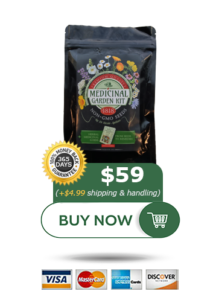
I have been following Nicole Apelian for the past year. Her work and contributions toward natural homemade medicinals is significant and her remedies are very efficacious.
I purchased one of her “Medicinal Garden Kits” and will be planting these 10 lost herbs in spring 2024.

During the Civil War, beyond the battlefield, everyday life brought its own challenges. Devoid of advanced pharmaceuticals, people relied on nature's healing power. Natural remedies played a crucial role in alleviating hardships:
Willow Bark: A reliable pain reliever amidst chaos, soldiers used willow bark, containing salicin, for headaches and muscle aches.
Slippery Elm: With rampant filth, the inner bark concoction eased digestive distress—gentle yet effective for diarrhea, heartburn, and gastritis.
Echinacea: Recognized for immune-boosting properties, Echinacea gained popularity, aiding in fighting diseases like colds and flu.
Calendula Salve: Marigolds played a vital role in wound healing. The calendula ointment reduced swelling and prevented infections.
Devil’s Walking Stick: Berries transformed into a tincture provided relief from toothaches and arthritis pain, inhibiting various illnesses.
Sage: A steadfast companion, sage-soaked mouthwash eased sore throats, minimizing swelling during the war.
Ginger: A potent anti-nausea treatment for challenging journeys, whether in tea or chewed, ginger settled stomachs.
Mustard Plasters: Common during breathing difficulties, mustard plasters stimulated blood flow, reducing congestion and improving breathing.
Cabbage Leaves: Known for anti-inflammatory properties, wrapping cabbage leaves eased arthritic pain around joints.
Witch Hazel: Applied topically, witch hazel relieved itching, irritation, and minor wounds.
These Civil War-era remedies showcase the resourcefulness of a time with limited medical alternatives, addressing common health conditions for both soldiers and civilians.